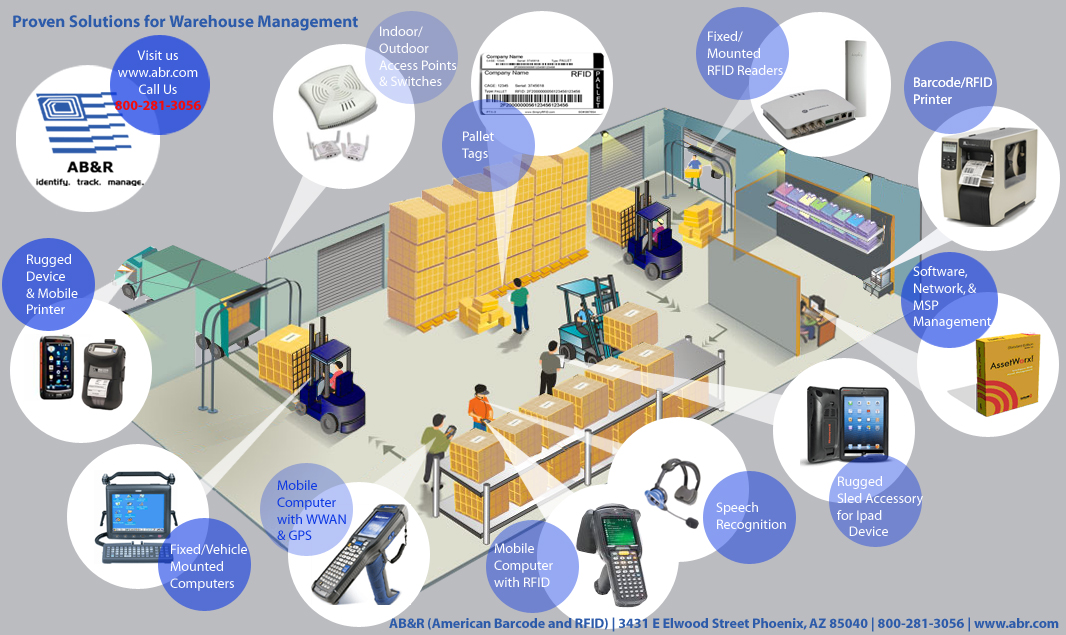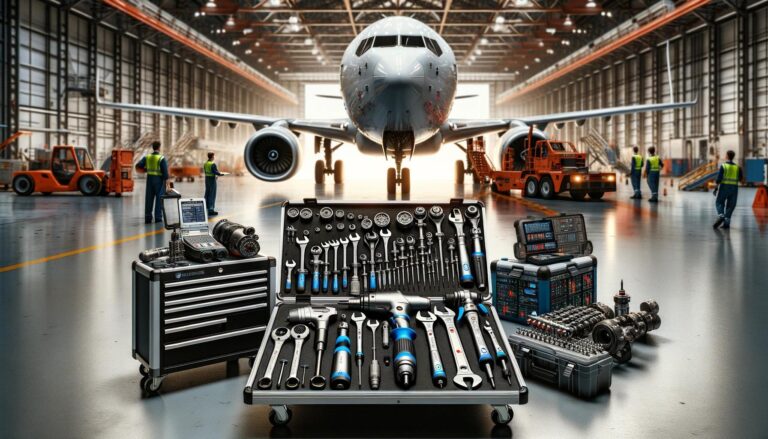The Growing Need for Logistics Technology in Business Operations
Logistics and supply chain management have become increasingly vital for businesses in recent years. As supply chains grow more complex, and consumer expectations for faster fulfillment rise, businesses need to adopt technology solutions to optimize their warehouse and inventory management. Implementing the right logistics software and warehouse management systems can significantly enhance efficiency, reduce costs and drive revenue.
The Rising Complexities of Logistics Networks
Global supply chains have become highly intricate systems with many moving parts. Raw materials and components often originate from suppliers across multiple continents and time zones. Manufacturing and assembly may occur in different locations before final products are distributed to local, regional or global markets. Managing and tracking inventory across this complex web is enormously challenging without the right technology.
Some key factors driving logistics complexity include:
- Globalization – Sourcing inputs and selling products worldwide creates massive logistical coordination needs.
- Outsourcing – Contracting with third-party providers adds layers within the supply chain.
- Lean inventories – Reducing on-hand stock enhances efficiency but leaves less margin for error.
- Shortened cycles – Faster production and delivery compress timeframes at every step.
- Personalization – Customized products and services limit standardization and require flexible production.
As logistical networks grow more intricate, they become increasingly prone to inefficiencies, errors and disruption without optimization through advanced technology.
The Need for Greater Speed and Flexibility
Consumer expectations have evolved rapidly, with demands for faster, customized and more flexible order fulfillment. Shoppers now expect:
- Faster deliveries – Overnight or same-day shipping has become commonplace.
- Free shipping – Retailers now often provide free shipping to remain competitive.
- Omnichannel fulfillment – Orders must be filled across multiple retail channels like brick-and-mortar, ecommerce and mobile seamlessly.
- Shorter lead times – Even business buyers expect fast turnaround on orders across production and distribution channels.
- Personalization – Consumers increasingly want products customized and tailored to individual preferences.
Fulfilling orders at the pace and flexibility today’s buyers expect is impossible without significant technology investments to achieve the necessary speed, precision and agility throughout logistics operations.
Warehouse Management Challenges
For many companies, the warehouse is the most critical link in the logistics chain. Optimizing warehouse management and order fulfillment is imperative for efficiency gains. Warehouse inefficiencies like:
- Excess or insufficient inventory
- Inability to locate items
- Incorrect storage or put-away
- Poor process flows
- Inadequate space utilization
- Excess workforce requirements
- Insufficient automation
can result in:
- Higher labor costs
- Missed deadlines and stockouts
- Slower response times
- More returns and adjustments
- Greater workforce safety issues
Without an effective warehouse management system to maximize productivity, minimize errors and maintain smooth workflows, companies struggle to stay competitive on key metrics like cost, quality and lead times.
The Benefits of Logistics Technology and Warehouse Management Systems
Implementing logistics technology solutions offers compelling benefits across critical dimensions of any supply chain:
1. Greater Inventory Visibility
Logistics systems provide real-time tracking of inventory across locations and movement points. This visibility enables better demand forecasting, optimal stock levels and reorder points.
2. Automated workflows
Automated systems like pick-to-light, put-to-light, automated storage and retrieval systems, automated guided vehicles and conveyor systems streamline workflows for greater speed and accuracy.
3. Increased productivity
Logistics software and warehouse automation boosts productivity by eliminating bottlenecks, reducing errors, minimizing delays from suboptimal workflows and eliminating repetitive manual tasks.
4. Enhanced labor management
Labor management modules track workforce performance, reducing overtime expense through optimized staff planning. Access to performance data improves coaching, level-loading and recognition programs.
5. Reduced order cycle times
Optimized inventory and production schedules minimize backlogs and stockouts. Automated order processing and fulfillment accelerates delivery times.
6. Real-time order and shipment tracking
Logistics systems connect purchasing, manufacturing, inventory and shipping data, enabling real-time order progress monitoring across the entire supply chain network.
7. Lower operational costs
By making workflows Leaner and more efficient, logistics software reduces operational costs related to labor, inventory, facilities and transportation.
8. Scalability for growth
Logistics technology solutions scale to accommodate business growth without compromising efficiency or performance.
9. Higher customer satisfaction
Fulfilling orders faster, more accurately and with more transparency improves customer satisfaction, retention and loyalty.
By enhancing supply chain efficiency, responsiveness and quality, logistics technology solutions deliver significant operational and competitive advantages.
Features of Effective Warehouse Management Systems
Modern warehouse management systems have advanced capabilities to optimize distribution center performance. Key features include:
- Real-time visibility – Real-time reporting of inventory levels, orders, equipment and workforce enables nimble decision-making.
- Inventory management – Tracks all product details like quantities, locations, expiration, transfers, adjustments and order allocations.
- Slotting optimization – Automates ideal storage locations based on product characteristics like turnover, dimensions and temperature sensitivity.
- Picking optimization – Streamlines picking paths based on order volumes, product locations and other constraints.
- Automated data collection – Automated scanning and data capture eliminates manual errors in inventory movement and order processing.
- Paperless workflows – Eliminates paper-based processes to improve accuracy and productivity.
- Labor management – Manages labor needs, schedules and performance to optimize staff usage.
- Yard management – Manages dock operations including scheduling, yard checks and truck loading.
- Performance analytics – Advanced reporting provides insights to drive continuous improvement.
- ERP integration – Interfaces with enterprise resource planning system for seamless information flows across management systems.
- Robotics integration – Interfaces with warehouse automation like automated storage and retrieval systems.
By leveraging these capabilities, warehouse management systems boost accuracy, speed and productivity throughout distribution operations.
Best Practices for Implementation
To maximize the value from warehouse management system implementations and avoid potential pitfalls, organizations should follow certain best practices:
- Involve users early – Get user input on needs, processes and system requirements.
- Customize minimally – Limit customizations by using built-in configurations and settings.
- Integrate with other systems – Ensure seamless data flows across other enterprise and logistics systems.
- Train thoroughly – Provide comprehensive user, admin and support training.
- Begin with basics – Focus initially on basic processes before adding complex enhancements.
- Iterate improvements – Continuously refine and optimize system capabilities post-implementation.
- Get executive sponsorship – Ensure leadership support for change management and user adoption.
Following these best practices will help companies realize rapid value from warehouse management system investments and achieve widespread user adoption.
Options for Logistics Technology Solutions
Companies have various options for implementing the logistics technology needed to optimize supply chain operations. The optimal choice depends on factors like business scale, complexity, cost and desired capabilities.
Warehouse Management Systems
Preconfigured warehouse management systems allow fast implementation with minimal customization. They provide essential capabilities like inventory and labor management, automated data collection and performance analytics. Top solutions include Oracle Warehouse Management, Infor Warehouse Management and Manhattan Warehouse Management.
Warehouse Control Systems
For complex automated distribution centers, warehouse control systems provide real-time control of automated equipment and robotics. Top solutions include Savoye WCS, Dematic Warehouse Control System and Swisslog Warehouse Control System.
Warehouse Execution Systems
Warehouse execution systems are real-time software platforms that direct order fulfillment tasks. Workers follow the automated workflow steps on handheld mobile devices. Top solutions include Manhattan Warehouse Execution, HighJump Warehouse Execution and Cadre WES.
Warehouse Management Mobile Apps
Mobile apps allow workers to view tasks, scan barcodes, enter data and update order status in real-time via smartphones and tablets. Top solutions include Körber Warehouse App Suite, Oracle Mobile WMS and SAP Mobile Warehouse Management.
Voice Picking Systems
Voice technology solutions guide workers through order fulfillment tasks via automated speech prompts and voice commands. Top solutions include Honeywell Voice, Voxware Voice Management Suite and Lucas Voice Warehouse Solution.
By selecting the right mix of logistics technology for their needs, companies can drive significant improvements in warehouse accuracy, productivity and responsiveness.
The Future of Logistics Technology
Logistics technology will continue advancing in capabilities and intelligence as computing power grows exponentially according to Moore’s Law. Here are some key innovations on the horizon:
Artificial Intelligence and Machine Learning
AI will enable logistics systems to continuously optimize warehouse operations and workflows in response to evolving constraints and objectives.
Advanced Robotics
Robots will take on greater manual tasks like lifting, shifting and transporting inventory. Robotics with advanced vision and grasping capabilities will provide greater speed and flexibility.
Predictive Analytics
By analyzing logistics data using advanced algorithms, systems will predict potential inventory and equipment failures before they occur. Optimization will happen preemptively rather than reactively.
Autonomous Vehicles
Self-driving material handling vehicles and semi-trucks will automate movement of goods between links in the supply chain both internally and externally.
Blockchain Integration
Blockchain will enhance transparency and trust across multi-party logistics networks via distributed, tamper-proof ledgers.
5G Connectivity
Faster 5G networks will enable real-time synchronization of logistics information across locations and coordinate movements of goods with greater precision.
By embracing the next generation of logistics innovations, companies can drive unprecedented performance across their supply chain operations.
Conclusion
As supply chains grow more complex and consumer expectations escalate, logistics technology has become imperative for business success. Warehouse management systems and other logistics software provide end-to-end visibility, automation and analytics to maximize efficiency throughout inventory and order fulfillment processes. Implementing the right solutions enables companies to improve speed, accuracy and productivity – gaining a critical competitive advantage. Businesses must actively assess their technology needs and explore options to meet rising logistics challenges. With the exponential evolution of innovations like AI, robotics and 5G, the full potential of logistics technology has only begun to be tapped. Companies that capitalize on the latest advances will be best positioned to lead their industries in the future.







